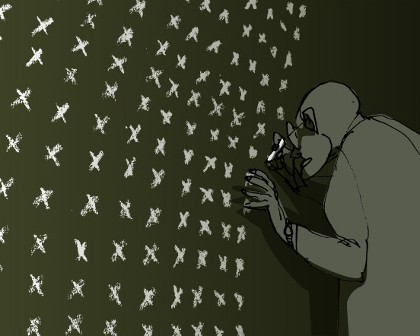When one perceives something, the distance between the sense organ and source is bridged in some way.
There are two possible explanations: either the source emits matter, which travels across space, or a short-term change propagates within the microworld between the source and the sense organ. This, for example, is how sound was first explained as a wave within the carrier medium of air in ancient times.
Light, however, presents a puzzle for physics: Is it a wave? If it is, what is it that oscillates? Unlike sound, light can also pass through a vacuum. Is it a stream of particles then? If it is, why doesn’t the source of light become lighter?
 Scene
Scene


 1st Slide
1st Slide
 Module: Labyrinth der Mikrowelten: Mikrowelten
Module: Labyrinth der Mikrowelten: Mikrowelten Sequence: 0.0. START
Sequence: 0.0. START Branching Point: Labyrinth of Microworlds
Branching Point: Labyrinth of Microworlds Slide: Labyrinth of Microworlds
Slide: Labyrinth of Microworlds


 Overview of Topics
Overview of Topics